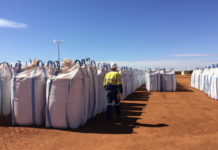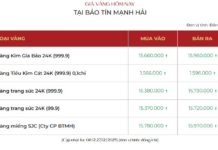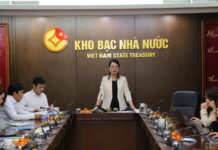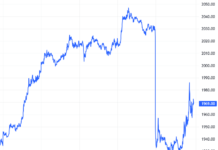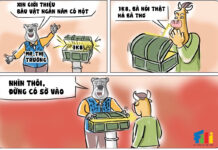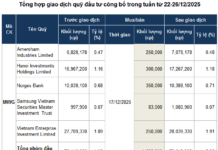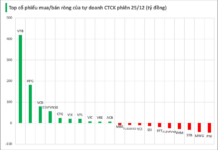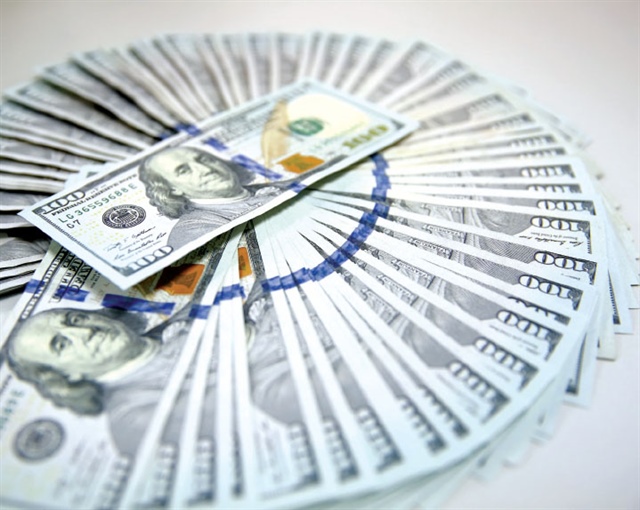 |
Dollarization reduction through a 0% USD deposit interest rate policy
According to recent information from the State Bank of Vietnam (SBV), the ratio of foreign currency deposits to total means of payment decreased from 11.06% in 2014 to approximately 6.05% as of June 2024. If calculated based on the latest published value of total means of payment as of the end of April 2024, the amount of foreign currency deposits in the system is currently approximately VND 970 trillion.
Although the ratio of foreign currency deposits has decreased, the growth rate has increased by 1.7 times compared to the end of 2014. However, this increase is not significant compared to the growth rate of VND deposits, which has increased by more than 3.2 times. As the economy expands and banks raise more funds, it is inevitable that foreign currency deposits will also grow. What is more important is that when assessing the dollarization of the economy, organizations will rely on the ratio rather than absolute numbers or growth rates.
In addition to deposits, the SBV stated that the ratio of foreign currency loans also tends to decrease, with the credit/foreign currency mobilization ratio decreasing steadily over the years, from 77.43% in 2016 to 52.65% as of June 2024. According to the writer’s estimates, foreign currency loans at the end of June 2024 were around VND 510 trillion, up 6.2% compared to the end of 2016, while VND loans have increased by nearly 2.8 times compared to the same period.
|
If the USD deposit interest rate is increased again, the VND deposit interest rate will also have to be raised accordingly to maintain an appropriate differential between the two currencies to attract depositors. This will indirectly increase the cost of capital for credit institutions, leading to an increase in lending rates. |
This shows that the shift from foreign currency mobilization and lending to foreign exchange trading, thereby enhancing the position of the VND, is being firmly maintained. In addition, the ratio of foreign currency loans to deposits has been consistently below 100% and declining in recent years, indicating that foreign currency mobilization still meets the domestic demand for foreign currency loans, ensuring foreign currency liquidity for the banking system and reducing pressure on exchange rates.
To achieve these results, we must mention the policy of capping the USD deposit interest rate at 0%, which the monetary authority boldly reduced from the end of 2015, after four consecutive years of reductions. If we look back at the past, the USD deposit interest rate at banks used to be as high as 5-6%/year, which explains why the economy was heavily dollarized at that time, as customers increased their foreign currency holdings while still enjoying attractive interest rates on their deposits.
Along with anti-dollarization policies, the strong inflow of foreign currency into Vietnam in recent years through foreign investment, remittances, and trade has enabled the SBV to buy approximately USD 48.2 billion from credit institutions to supplement foreign exchange reserves from 2016 to the present; of which, from 2016 to 2021, the SBV bought approximately USD 71 billion from credit institutions. Additionally, the reduction of inflation from double digits to single digits and its maintenance at low levels have enhanced the value of the VND and converted USD resources in the population into capital serving the economy.
What other benefits are there?
Recently, some opinions have suggested that the policy of capping the USD deposit interest rate at 0% should be abolished, or in other words, the USD deposit interest rate cap should be raised, based on the argument that the USD/VND exchange rate has been unpredictable due to the Fed’s policy of maintaining a high basic USD interest rate, leading to the risk of a reversal in international capital flows. The monetary authority, in a recent conference, stated that they would provide a detailed report evaluating the implementation of the 0% USD deposit interest rate policy over the past years.
Apart from countering dollarization, what other important impacts has the 0% USD deposit interest rate policy had, and why should it be maintained?
First, abolishing this policy would mean allowing banks to pay interest on USD deposits, which would, in turn, put pressure on the USD/VND exchange rate instead of helping to stabilize it. This is because we might go back to the old story of people being incentivized to hold USD as they can earn interest on their deposits.
There are also opinions that the policy should be abolished to align with market realities and demands. It is argued that some credit institutions have used loopholes to attract customers to deposit USD despite the 0% interest rate policy.
The way this is done is by still accepting USD deposits at 0% interest, then lending VND with the collateral being the USD savings account, with the loan term almost equal to the term of the USD savings account and the lending rate only at 1-3%/year (banks currently lend at 2-3% higher than the savings rate). With the borrowed VND, customers will then deposit it back into the bank at terms with interest rates of 4-6%/year, thus ensuring that they benefit from the interest rate differential from the initial USD deposit.
However, we cannot consider abolishing the 0% USD deposit interest rate policy to legitimize the demands of banks or customers due to these isolated transactions. To prevent such transactions, the monetary authority needs to implement more effective control mechanisms and solutions.
Some argue that increasing the USD deposit interest rate domestically aims to narrow the gap with the basic USD interest rate currently maintained by the Fed at 5.5%/year, reducing the outflow of foreign capital to countries with higher USD interest rates. However, first of all, how much should the interest rate be increased to be considered appropriate? It is also worth noting that the Fed may start cutting rates at its September meeting.
Moreover, as Vietnam has not fully liberalized capital transactions, the management agency needs to have policies to closely monitor and effectively prevent the outflow of foreign capital to other countries through unofficial channels, in accordance with current regulations, as well as to reduce long-term errors and discrepancies in the overall balance of payments.
Second, if the USD deposit interest rate is increased again, the VND deposit interest rate will also have to be raised accordingly to maintain an appropriate differential between the two currencies to attract depositors. This will indirectly increase the cost of capital for credit institutions, leading to an increase in lending rates. The next consequence is that it will put pressure on the economy, affecting consumption and investment expansion, contrary to the monetary authority’s goal over the years to continuously strive to reduce lending rates to enhance the competitiveness of the economy.
Third, in the long run, Vietnam remains committed to the orientation of shifting from foreign currency mobilization and lending to foreign exchange trading to enhance the position of the VND. In the future, if foreign currency mobilization and lending activities are gradually eliminated, why consider reintroducing the policy of allowing interest on USD deposits? This goes against the long-term development orientation and the set policy goals.
Tuệ Nhiên


